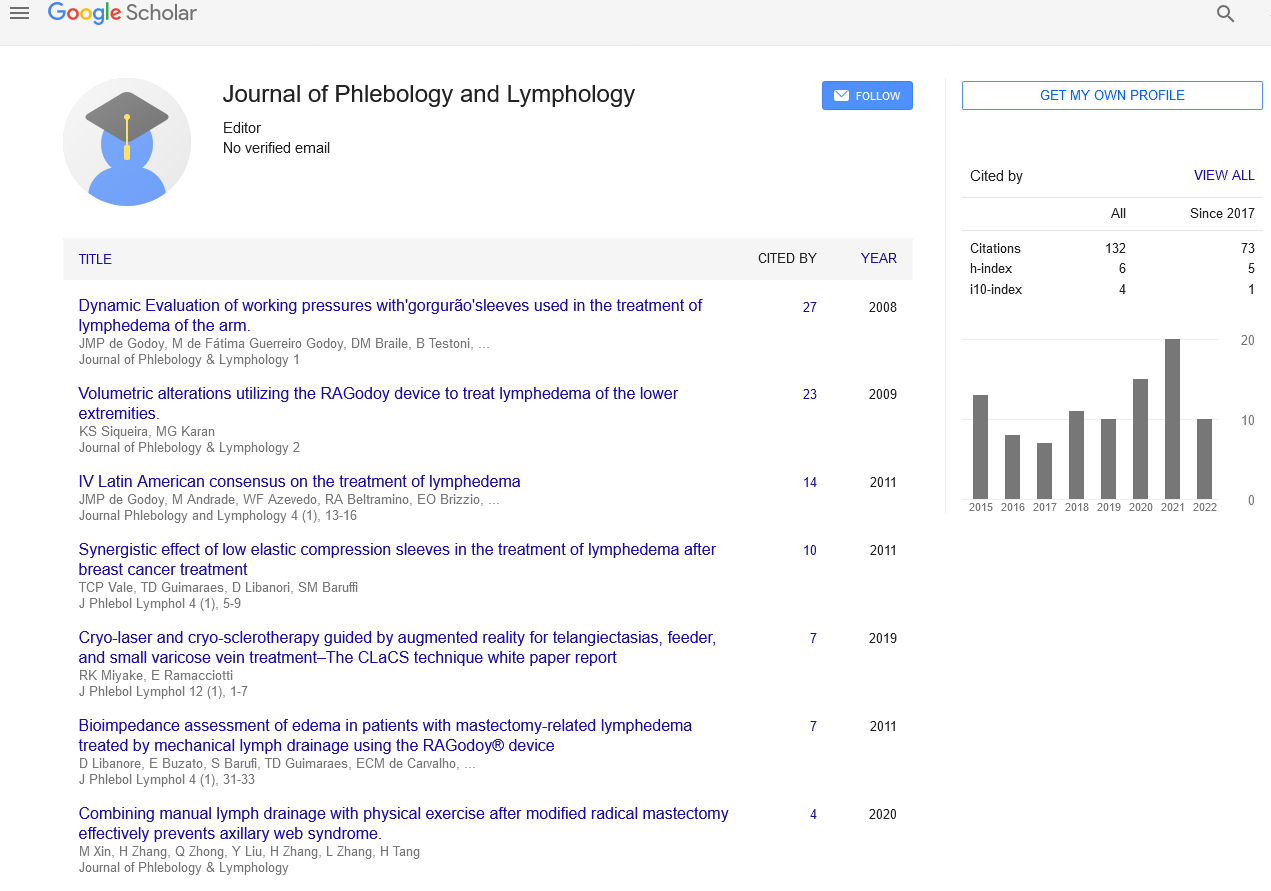Advancements in lymphatic imaging and visualization techniques
Received: 05-Aug-2023, Manuscript No. puljpl-23-6814; Editor assigned: 08-Aug-2023, Pre QC No. puljpl-23-6814 (PQ); Accepted Date: Aug 27, 2023; Reviewed: 23-Aug-2023 QC No. puljpl-23-6814 (Q); Revised: 26-Aug-2023, Manuscript No. puljpl-23-6814 (R); Published: 29-Aug-2023
Citation: Twain M. Advancements in lymphatic imaging and visualization techniques. J Phlebol Lymphology. 2023; 16(3):01-02.
This open-access article is distributed under the terms of the Creative Commons Attribution Non-Commercial License (CC BY-NC) (http://creativecommons.org/licenses/by-nc/4.0/), which permits reuse, distribution and reproduction of the article, provided that the original work is properly cited and the reuse is restricted to noncommercial purposes. For commercial reuse, contact reprints@pulsus.com
Abstract
The lymphatic system plays a crucial role in the body's immune response and fluid balance. Accurate imaging and visualization of the lymphatic system are essential for understanding its structure, function, and pathophysiological alterations. This comprehensive review discusses the recent advancements in lymphatic imaging and
visualization techniques, including non-invasive imaging modalities, contrast agents, and emerging technologies.
Key Words
Lymphatic system; Lymphatic imaging; Visualization techniques
Introduction
E The lymphatic system is a vital part of the circulatory system, primarily responsible for maintaining tissue fluid homeostasis, immune surveillance, and lipid absorption. Disorders of the lymphatic system can lead to a range of diseases, including lymphedema, infections, and certain cancers. Accurate visualization and imaging of the lymphatic system are crucial for understanding its anatomy, physiology, and pathological alterations. Over the years, advancements in imaging and visualization techniques have greatly contributed to our knowledge of the lymphatic system, enabling better diagnosis, monitoring, and treatment of associated conditions.
Conventional lymphatic imaging techniques, such as lymphoscintigraphy and lymphangiography, have paved the way for modern non-invasive imaging modalities like Magnetic Resonance Imaging (MRI), Computed Tomography (CT), and ultrasound. These technologies offer high-resolution imaging of lymphatic structures, aiding in the assessment of lymphatic flow, lymph node status, and potential abnormalities. Furthermore, the advent of novel contrast agents, both chemical and nanoparticle-based, has significantly improved imaging contrast and specificity, enhancing the accuracy and sensitivity of lymphatic imaging.
In recent years, emerging technologies such as photoacoustic imaging, Optical Coherence Tomography (OCT), and NearInfrared Fluorescence (NIRF) imaging have shown promising potential for lymphatic imaging. Photoacoustic imaging utilizes laser-induced ultrasound to visualize lymphatic vessels and lymph nodes at high resolution, while OCT provides real-time, high-resolution imaging of lymphatic microstructure. NIRF imaging, with the aid of fluorescent contrast agents, offers noninvasive imaging of lymphatic drainage patterns and sentinel lymph nodes, particularly in the field of oncology
Contrast agents play a critical role in enhancing the visibility and specificity of lymphatic imaging. Traditional contrast agents, such as iodine-based agents for CT and gadoliniumbased agents for MRI, have been used to improve contrast in lymphatic imaging. Additionally, nanoparticle-based contrast agents, such as gold nanoparticles and quantum dots, have gained attention for their potential in targeted imaging and drug delivery to the lymphatic system.
Conclusion
Advancements in lymphatic imaging and visualization techniques have significantly expanded our understanding of the lymphatic system's structure, function, and pathophysiological changes. Non-invasive imaging modalities like MRI, CT, and ultrasound, coupled with innovative contrast agents, have greatly improved imaging accuracy and resolution.
Moreover, emerging technologies like photoacoustic imaging, OCT, and NIRF imaging offer exciting prospects for highresolution, real-time imaging of the lymphatic system. Harnessing these advancements will not only advance our knowledge of lymphatic biology but also enhance diagnostics and treatment strategies for various medical conditions related to the lymphatic system. Future research should continue to explore and optimize these techniques, paving the way for improved patient care and outcomes.





